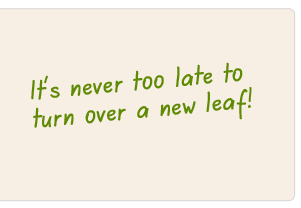October “Scoop”…What About Debt?
.jpg)
WHAT ABOUT DEBT?
We hear a lot about debt today: Personal debt is at all-time highs; government debt is out of control. What does it all mean? What’s the truth? Is all debt bad? Where do you stand?
Understand Your Debt – It is most important to understand your debt. How did that debt occur? Was it a one-time event that was out of your control? For instance – were you out of work for a period of time? Is your debt increasing every month?
Create a Cash Flow Statement – We could call this a budget; however, many people dislike the idea of a budget. Whatever we call it, it is imperative you know what is coming into your household on a monthly basis and what is going out. If your income does not equal your expenditure – it’s easy to see that your debt can increase every month. For instance, if you are $200 short every month – and that $200 ends up on your line of credit – you start one month with $200. The following month you add $200 and on and on – you get the idea. Not only is the debt increasing, but you have also added a bill payment that does not fit in the budget. Contrary to popular opinion – having a cash flow statement can be liberating because it creates knowledge and control. It means having a plan. Yes – plans create freedom.
Not all Debt is Created Equal – There is a big difference between debt that is creating an asset and consumer debt. When I speak about debt that is creating an asset, I’m talking about a mortgage on a home or a course you took that was needed for work or the vehicle you bought to drive to work. When I speak about consumer debt, I’m talking about the impulsive purchase of a big screen TV, a seventh pair of cute dress shoes or a new tool you think is really cool but that you might only use once. When your cash flow statement shows that you do not have enough flowing in each month to cover the expenses flowing out, there are two approaches you can take to fix this.
1. You may find there is a behaviour that needs to be addressed. I’m certainly not against big screen TV’s and shoes. What may need to be addressed is the impulse buying. Credit is readily available. This is a relatively recent phenomenon. Our grandparents had only one choice; save the money and then make the purchase. It’s so easy for us to see a great deal we can’t pass up and put it on a credit card. If there are a large number of impulse purchases in your history, you may have to look at these behaviours and put some limits in place. This is not to say that you can never do anything impulsive, but wouldn’t it be great if you had that worked into a budget, and you knew what discretionary funds you had?
2. You may find your purchases are all practical. You may find that you are actually doing great. You may also find out there is nothing in your cash flow you can give up. Perhaps there just is not enough money coming in to pay your bills. For instance, if you are always going to be $200 short every month, you have discovered you need to earn another $200 a month. This could be a second stream of income. This could be taking something you love to do and turning it into something to earn some extra money. Be creative.
Be Kind to Yourself – Be prepared to accept what you learn and take whatever steps are needed. Take control of your cash flow. Give yourself a pat on the back because you have examined the situation and are taking steps to correct it. Please do not berate yourself for your situation. It does no good to blame yourself. If you find your debt is unmanageable and you need help, there are organizations such as Consolidated Credit Counselling of Canada who offer counsellors that provide training to help you take control.
To test your knowledge regarding credit, follow this link.
If you need a financial plan to help you achieve your goals, send me an email. I’m here to help.
~ Lynn@stepright.ca
Lynn Whetham is a Certified Financial Planner and managing partner at Stepright Capital Planning Inc. in St. George, Ontario.



Connect with us Online